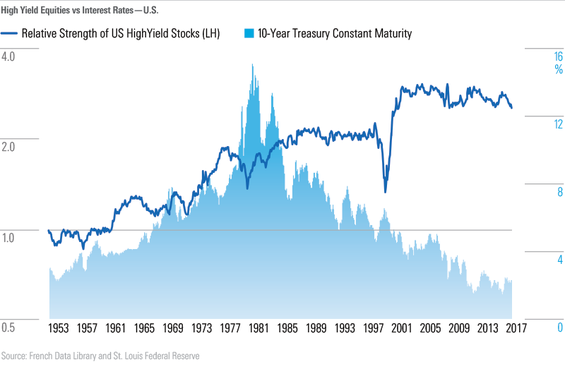Investors across the globe prize dividend-paying stocks for both income and total return. Dividends demonstrate balance-sheet strength and a commitment to shareholders. Studies show that reinvested dividend payments contribute a substantial portion of long-term equity market returns.
But dividend investing is far from risk free. Interest rates are widely viewed as the principal nemesis. A bigger risk is “dividend traps,” stocks with enticing yields that cut their payout or encounter distress.
So, what should investors know about selecting dividend-paying stocks?
1. Backward-looking indicators can mislead dividend investors
Chasing yield can lead investors to risky corners of the market. The past decade is littered with instances of dividend traps, such as financial services stocks in 2008-09 and energy and materials in 2015-16.
Investors reliant on backward-looking indicators, such as a company’s dividend-paying history, have been burned. For example, Bank of America was a reliable payer for decades—until it wasn’t.
2. A forward-looking approach can be more beneficial for helping dividend investors avoid traps
In 2010, Morningstar designed a uniquely forward-looking approach to rules-based passive equity income investing: the Morningstar Dividend Yield Focus Index. Since the index methodology has globalized, we updated and expanded the study into the efficacy of the metrics we use to screen out companies at risk of cutting their payout.
We found that Morningstar’s metrics for quality and financial health have global utility for dividend investors. The Morningstar Economic Moat Rating is assigned by equity analysts to 1,500 companies globally. The Quantitative Economic Moat Rating algorithmically mirrors the analyst-assigned rating and extends the coverage universe across developed and emerging markets.
Both ratings are meant to describe the strength of a firm’s competitive position, gauging the sustainability of profits that ultimately fund dividends. Distance to Default gauges financial health, forecasting the likelihood of bankruptcy.
In each region, the trend was the same. The wider the moat and the higher the Distance to Default score, the less likely for a company to cut its payout.

By screening the dividend-paying universe for these metrics, the Morningstar Dividend Yield Focus Index family focuses on sustainable yield. It offers a selective, forward-looking approach to equity-income investing. Results for Quantitative Economic Moat Rating and Distance to Default can be found in the paper.
3. Dividend investors should focus more on moats than interest rates
Intuitively, higher interest rates make cash and bonds more attractive relative to dividends. For this reason, dividend payers often take a hit when rates rise. But longer term, does equity income struggle in higher rate environments, and vice versa?
We examined the relative performance of dividend-paying stocks in different interest-rate environments. We looked at returns for higher dividend payers against the 10-year government bond yield in several markets—the U.S., the U.K., Germany, Japan, and Australia.
The results for the U.S., displayed below, demonstrate no clear pattern. In some periods of rising rates, such as the mid-1970s, high-yield equity outperformed. As rates fell from the mid-1980s to the mid-1990s, performance was fairly flat. In the late 1990s, dividend-paying stocks were distinctly unfashionable, despite low rates. Dividend-paying stocks also struggled during the low-rate environment of post-2008.

This conclusion holds across markets studied. The wider context matters. Dividend investors should fret less about interest rates and more about moats .
Dan Lefkovitz is a strategist for Morningstar's Indexes product group.

